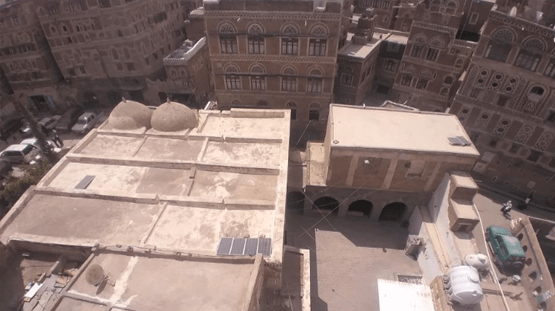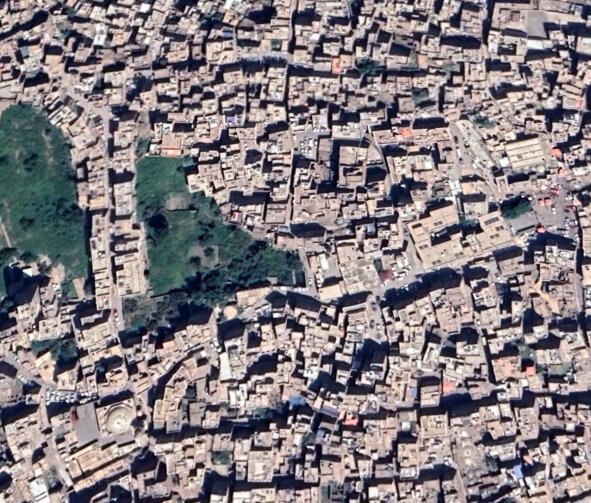
Dā’ūd Mosque – Old Ṣan‘ā’
مسجد داؤود صنعاء القديم ة
Monument description
The historical sources mention that the builder of the Mosque was Sheikh Daoud bin Al-Makin in the 7th century AH. It is said that he was one of the princes of Sana‘a during the rule of the Ziyad State, as told by the popular memory, along with his brothers Muhammad bin Al-Makin, who built the new Hara Mosque in the 8th century, and their brother Musa bin Al-Makin, who built the Musa Mosque, and the Imam al-Mutawakkil in God Sharaf al-Din Yahya Ibn Imam al-Mahdi added in the first half of the century. It is also said that the Mosque was without a minaret at the beginning, and it may be a right thing because the presence of a minaret will obscure part of the view from the city. In a later period, perhaps not long ago, a small minaret was built for the Mosque.

Architectural and cultural value
Construction style and built date: The layout of the Mosque is in the style of mosques, which consist of a Prayer Hall, with a flat roof supported by wooden beams resting directly on the capitals of stone columns and arches. The date of its construction is not known, and it is likely that it was before the 10th century AH.
Components of the Mosque: Prayer Hall, small Minaret, Al-Manzilah, Berkah, Ablution Unit, Sabil and traditional baths.
- Justifications for intervention:
- 1 – Neglecting the competent authorities in carrying out periodic restoration work due to the lack of budgets for the repairs.
2 – Preserving the monument from disappearance and stopping the damage caused to the monument from expanding.
3 – Restoration of the damage to the mosque resulting from the flight strikes of the southern part of the old city of Sana’a.
4 – Contribute to the restoration of damaged monuments in a proper manner in order to keep Old Sana’a In the World Heritage List.
- Monument conditions:
- Damages resulting from the old building or building and time factors, damages resulting from wrong repairs, damages resulting from previous poor restoration, and damages resulting from water leakage into the mosque, and these damages include.
1 – Existence and cracking of a substance, Qadad in the water pool and walls and surfaces.
2 – Cracks on the roof of the prayer house.
3 – The problem of simple subsidence, moisture and salinity in the foundations.
4 – The collapse of some parts of the stone walls of the settlements and the northern gate of the pond.
- Treatment:
- – Restoration and re-layer Alqodd in the affected places. Re-dressing and making a coast to drain rainwater on the northern facade.
– Reconstruct the dilapidated walls.
– stop longitudinal cracks
– Treating damaged foundations and solving the problem of moisture.
– Treating roofs and preventing rainwater intrusion

Countries












